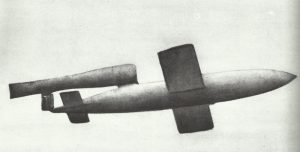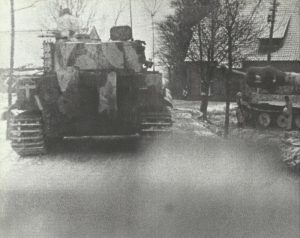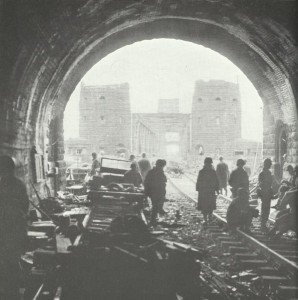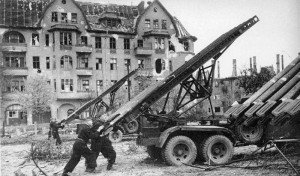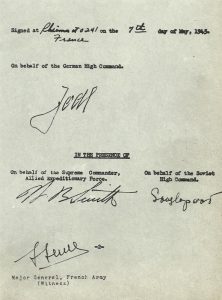The monthly days of 1945:
Table of Contents
- January 1945
- February 1945
- March 1945
- April 1945
- May 1945
- June 1945
- July 1945
- August 1945
- September 1945
The last year of the war: 1945 in WW2.
The situation at the beginning of 1945
The Allies at the outset of 1945 thought to collapse Germany that year. It had been their anticipation that the Wehrmacht would carry on and struggle ferociously on the defensive, particularly since it was the German homeland which was becoming invaded, but there was clearly belief in success.
The Allied air forces dominated the skies over all the fronts; and although sometimes the Luftwaffe could nevertheless muster significant figures, the Allies drastically outnumbered them, had better experienced plus more skilled aviators, and could, when it came to it, replace losses a lot more simply than the Luftwaffe.
By now, additionally, the bombing strikes on Germany’s synthetic oil plants as well as the conquest of the Ploesti oil fields by the Soviets had so diminished the fuel accessible to the Luftwaffe that lots of its aircraft purely couldn’t be used.
The Kriegsmarine was nevertheless planning to come back to the Battle of the Atlantic using modern U-boats Type XXI which could go at high-speed submerged; however even if these fresh types, being supplied and experimented with during the cold months, ever could be put into operational service, they would be blind without air recon – of which there was not the least chance.
The U-boats in real service, those of the old Type VIIs but prepared by a snorkel so that the batteries could be charged up again without the necessity for complete surfacing, were now having little of results.
In spite of the extensive casualties of the summer and fall 1944 and in spite of the effect of the more and more serious Allied bombing attacks, the home front performed. There had been an increase of spirits once the first reports of success in the Battle of the Bulge arrived, however that soon disappeared. There were nevertheless hopes for different secret weapons, considering that the V-2 and V-1 had undoubtedly not really turned the trend, however other variables assisted to hold the system together.
Undoubtedly a significant component in the cohesion of Nazi Germany had been the triumph of Hitler and his followers over the inner opposition on and after July 1944. The achievement of the Gestapo e in ferreting out resistance members together with the escalating terror in Germany and in the Wehrmacht seemed to assist all to go together or at a minimum keep their complaints privately.
Fightings in Hungary
Before the fresh huge Red Army attacks in Poland started in January 1945, the circumstance in Hungary had been changing steadily nevertheless slowly favoring the Soviets. The capital of Budapest had been surrounded on December 26 after Hitler declined again authorization for the German troops in order to retreat soon enough. The big urban center was currently besieged, nevertheless the Russians stopped when confronted with Hungarian and German increasing opposition and the fatigue of its own attacking strength on December 28, 1944.
The Germans prepared an important relief operation, to some extent for the political purpose to keep the Hungarians in line of smashing the siege and to some extent in order of shielding the Hungarian oil fields, which were mainly crucial for the German war effort following the loss of the Ploesti oil fields in Romania along with the success of the Allied bombing offensive on the synthetic oil industry at home.
Right here the Wehrmacht created its final huge operation of WW2. During Wintertime offensives in the East. Throughout January, a number of German assaults pushed in the direction of Budapest, however, as in the scenario of the attempted relief of Stalingrad 2 years ago, didn’t break through and arrive at the isolated troops.
The Russian main offensive
The earlier strike had the benefit, however, of stunning most of the German HQ’s, which in fact had estimated the Russians to wait for more desirable climatic conditions. The reserves of the Wehrmacht had mainly been shipped to Hungary; on the most important front virtually almost everything the Germans deployed was within Russian artillery range.
The huge attacks, started on January 12, 13, and 14 in the Battle of the Vistula, truly practically destroyed the German troops in front of them, pushed away both the remnants of the German front units along with what handful of reserves had been deployed behind the German lines, and had broken into the open by January 17.
Elements of the German front had been encircled as Russian armored units cut in to their rear while in other places the unorganized remnants of German divisions – preceded by rear area administrations and services – flee back toward the borders of Germany. When the weather conditions cleared, the Russian planes seized powerful control of the skies.
The Russian triumph had been of tremendous size, and it also created even more dilemma for the reason that Soviets increased in self-belief as well as spirits as the Germans, pursued over locations previously rarely dealt with by warfare and actually objective of numerous evacuated from the Western side due to air strikes there, fled just before what seemed more and more just like an unbeatable onrush.
The Allied advance in the West
Just as the Russian attacks had been coming to a standstill on the river Oder, and the Wehrmacht had been being prepared for yet another counter-attack in Hungary, the Allies in the West, having annihilated the bulge which result from the German December operation, had been on the point of strike once again.
More than 1.5 million US GI’s; 400,000 Canadian and Canadian soldiers, as well as greater than 100,000 French troops were deployed for the strike on Germany itself.
Strange thing is that, the October 1944 blast which result from a US air strike, which had destroyed the suspension bridge into the river Rhine, had inspired the Germans to rewire the explosives on the other bridges lest the same incident befall them; and the increased complexity of blowing up the re-wired bridge now kept them from wrecking the Remagen bridge in the dash of the US assault.
With the permission of Eisenhower and Bradley, Hodges immediately sent US troops across the Rhine, acquired a perimeter on the opposite side versus desperate German attacking attempts, and had alternative pontoon bridges ready the moment German air strikes and artillery guns caused the structure, destabilized by the previous destruction work, to break down. The final obstacle into Germany from the west had been cracked.
Prior to the Ruhr had been encircled, Hitler had given rigid instructions that all transportation, industrial, along with other facilities within Germany must be demolished unless they fall into Allied hands. These kinds of instructions had routinely followed all other retreats pressured on the Germans, and often German commanders had carried them out ruthlessly to the most effective degree possible, without any consideration to the future survival of inhabitants who had previously suffered significantly.
In special situations there had been unwillingness to abandon only ruins – Florence and Paris being cases – but in general, the tempo of several German retreats instead of humanitarian inhibitions had resulted in some structures, facilities, and supplies to fall into Allied hands not wrecked.
That attitude began to alter after the battling transferred inside Germany. Speer started to foul up the sabotage instructions, and lots of German commanders submitted instead of carried out the orders to eliminate whatever might assistance existence in area captured by the Allies.
As Allied troops advanced quickly, they sometimes dealt with circumstances where the local German population made an effort to discourage the army from defending a specific village in order to keep it from being ruined. Soldiers, for apparent reasons, don’t want to be killed, however they especially don’t want to be the last one killed in a war.
A common routine, consequently, was that when US soldiers reached a truly defended place of opposition, it would just draw back somewhat, demand the air force and artillery to pound it to pieces, and then went on.
Many Germans, at this point losing trust in the chance of triumph or even stalemate, chosen over save their towns the destiny which the war Germany started had coming to numerous other villages. The white flags of surrender came out more and more frequently even as in some spots fierce opposition even now flared up.
Battle for Berlin
Within the first 14 days of April, while the Third Ukrainian Front had been advancing massive into Austria, capturing Vienna by April 3, the enormous arrangements for the primary attack proceeded to go ahead, substantially assisted similar to earlier this sort of organized offensives by the 1000s of vehicles which the America had shipped under Lend-Lease. With some 2.5 million troops deployed, the attack opened on April 16. Stalin had advised his generals he wished it carried out in 12 to 15 days, and at massive charge in deaths these people presented mainly what he had requested.
Even though Zhukov’s 1st Belorussian Front began with bridgeheads across the Oder river, its first assaults, started at night with searchlights expected to blind the Germans, hardly ever forced the defenders back frontal. For 3 days the attacking units piled up against the defenses. Pushed ahead by Zhukov at Stalin’s insistence, the Russians ground ahead. As guns donned down the Germans, Russian troops broke into and through frontline of Army Group Vistula toward and north of Berlin.
There have been extremely serious casualties on both sides, and numerous Russian tanks were knocked-out, many by hand-held Panzerfaust anti-tank rockets used by Hitler Youth boys; but the overwhelming strength of the offensive continually forced all before it away.
Hitler’s paranoid attempts to have Berlin relieved had no significant impact on the battle. In hammer blows from all sides, Russian divisions struggling their approach into the center, suffering huge casualties but continue to advance however.
Hitler had chosen to remain in Berlin and commit suicide there if the relief strategies didn’t perform. And this was the way it happened.
German surrender
The surrender was finally autographed in 2 acts, the first in Reims on May 7 and once more in Berlin on May 8.




